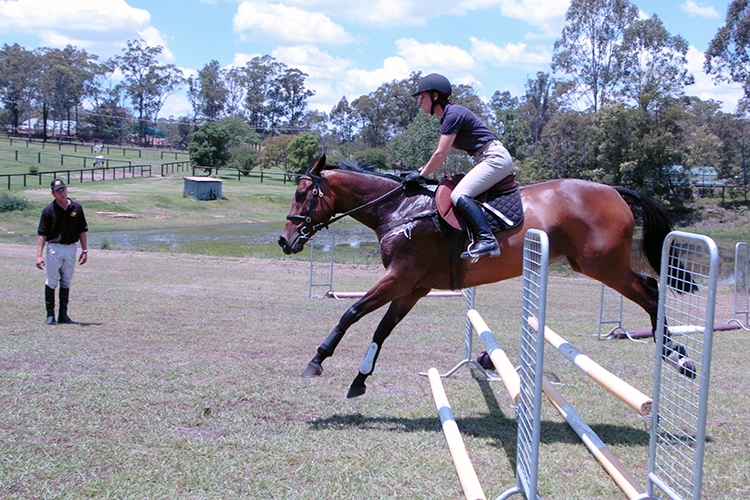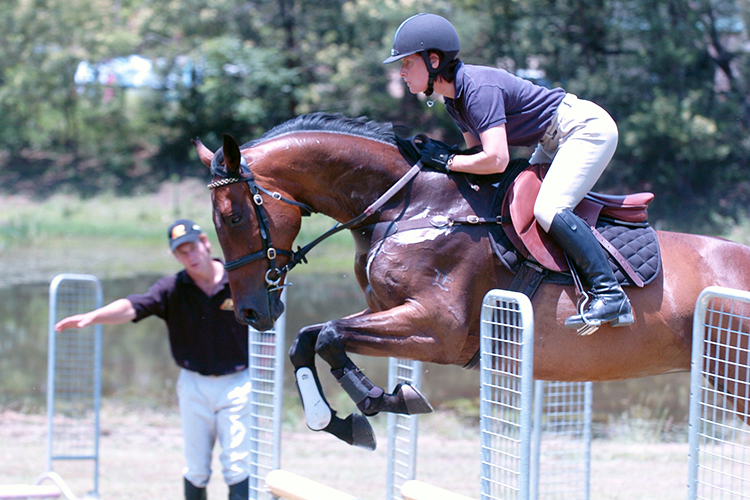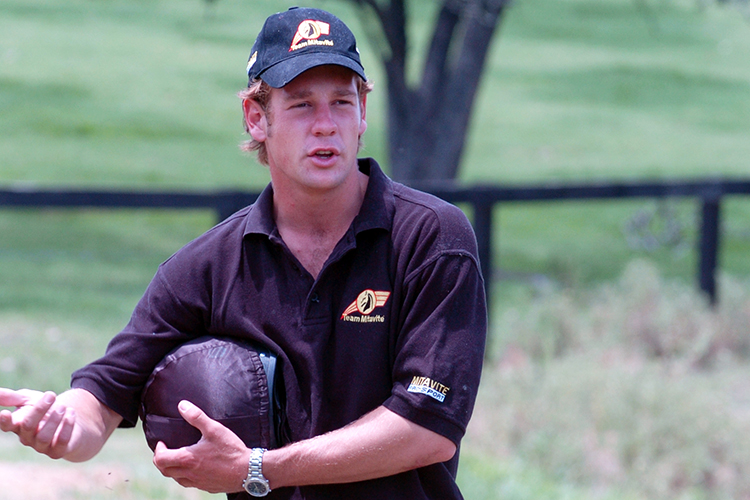
We sit in on a lesson with Christopher Burton
Christopher Burton is one of our most stylish looking riders, and it is no surprise that he is properly fussy about rider position. His pupil, Clare Watkinson has to carry her hands, keep her elbows in, think about her position…
“Keep your thumbs together so you know where your hands are. Your elbows loose and more elastic by your side. Stand in your stirrups, stretch down and think about your lower leg being there all the time. Toes out a little, stretch your heel down, that’s the lower leg I like.”
“Pick up the canter, stay in the saddle, think about your lower leg, now off her back, open her up, and let her travel. We want her easily adjustable before you start jumping.”
“Light hands are nothing to do with the hand on the rein – they come from elastic elbows. Don’t rest your hands on her neck, balance on your lower leg – that’s why we need it in position, the lower leg has to be secure enough to support your body.”
And it was time to ride some circles to get the mare back on her hocks, into trot again, shortening and lengthening the trot: “It is going to require a lot more balance than you’ve got now, to get around this course. You must have her listening to the aids before you start jumping.”
Warm up completed, it was pick a line in the distance and line up to the cross rail and pole. “Pick a distance, either six or seven strides, whatever you want, but make it happen.”

Sure enough a lovely seven strides comes up, but Chris is not happy with the line: “Look to your line earlier and stay straight, and stay straight away from the fence as well as to it. Halt after the fence, and still stay straight and get her to yield. Don’t let her run through the bridle, if you do that you are schooling the wrong thing. Rein means slow down, leg means go forward – so why when we see a wrong distance do we grab for the reins?”
The pole becomes a little vertical: “Try to do the work early then leave her alone. Being clever enough to leave the horse alone is one of the ways we get them to jump. Look at a horse free-schooling, the neck is down, the jump is classical. We want to leave them alone so we get that jump with us on their backs, and again, that is why we need that good lower leg to support us, so we can leave them alone and get that natural jump.”
“If we do the schooling before we get to the first element, then leave them alone, they learn to jump rather than worrying about us. And keep your eyes up – let the horse watch the fence, you insist on the line. As soon as your eyes stay up, your shoulders stay back, and you don’t jump your body forward.”
Want to read the whole article? https://www.horsemagazine.com/thm/2019/10/clare-watkinson-takes-a-lesson-with-chris-burton/

